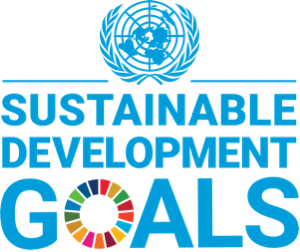Evaluation of Barriers to Electric Vehicle Adoption in Indonesia through Grey Ordinal Priority Approach
DOI:
https://doi.org/10.52812/ijgs.46Keywords:
Grey Ordinal Priority Approach, Ordinal Priority Approach, Multiple Criteria Decision Analysis, Multiple Criteria Decision Making, Electric Vehicle, Grey Model, IndonesiaAbstract
Emissions from vehicles are a major contributor to greenhouse gases, and thus climate change. Electric vehicles (EVs) provide a promising solution to deal with this problem. Even though in the emerging economies like China and Europe, the adoption of EVs is praiseworthy, the pace of the EV rollout in Indonesia is slow. The Indonesian electric vehicle market has remained stagnant due to the country's low adoption rate of electric vehicles, which is currently less than 0.3%. This is because electric vehicle adoption has been stymied in Indonesia for a variety of reasons. As such, the purpose of this study is to determine the factors influencing electric vehicle adoption in Indonesia and to rank the barriers to widespread EV rollout in the country using the Grey Ordinal Priority Approach (OPA-G). It is found that high initial purchase price, insufficient amount of charging infrastructure, and a lack of government incentives are key barriers to the EV adoption in Indonesia.
References
Abdel-Basset, M., Mohamed, M., Abdel-Monem, A., & Elfattah, M. A. (2022). New extension of ordinal priority approach for multiple attribute decision-making problems: design and analysis. Complex & Intelligent Systems. https://doi.org/10.1007/s40747-022-00721-w
Adhikari, M., Ghimire, L. P., Kim, Y., Aryal, P., & Khadka, S. B. (2020). Identification and analysis of barriers against electric vehicle use. Sustainability, 12(12), 1–20. https://doi.org/10.3390/SU12124850
Asadi, S., Nilashi, M., Iranmanesh, M., Ghobakhloo, M., Samad, S., Alghamdi, A., Almulihi, A., & Mohd, S. (2022). Drivers and barriers of electric vehicle usage in Malaysia: A DEMATEL approach. Resources, Conservation and Recycling, 177, 105965. https://doi.org/10.1016/j.resconrec.2021.105965
Asadi, S., Nilashi, M., Samad, S., Abdullah, R., Mahmoud, M., Alkinani, M. H., & Yadegaridehkordi, E. (2021). Factors impacting consumers’ intention toward adoption of electric vehicles in Malaysia. Journal of Cleaner Production, 282, 124474. https://doi.org/10.1016/j.jclepro.2020.124474
Asif, M., Jajja, M. S. S., & Searcy, C. (2021). A Review of Literature on the Antecedents of Electric Vehicles Promotion: Lessons for Value Chains in Developing Countries. IEEE Transactions on Engineering Management. https://doi.org/10.1109/tem.2021.3099070
Aziz, M., Marcellino, Y., Rizki, I. A., Ikhwanuddin, S. A., & Simatupang, J. W. (2020). Analysis of Technological Developments and Indonesian Government Support for Electric Cars [Studi Analisis Perkembangan Teknologi Dan Dukungan Pemerintah Indonesia Terkait Mobil Listrik]. TESLA: Jurnal Teknik Elektro, 22(1), 45. https://doi.org/10.24912/tesla.v22i1.7898
Bah, M. K., & Tulkinov, S. (2022). Evaluation of Automotive Parts Suppliers through Ordinal Priority Approach and TOPSIS. Management Science and Business Decisions, 2(1), 5–17. https://doi.org/10.52812/msbd.37
Bakker, G. (2021). Infrastructure killed the electric car. Nature Energy, 6(10), 947–948. https://doi.org/10.1038/s41560-021-00902-w
Bigot, S. (2020). 8 things to know about electric cars in Russia. Eurasia Network. https://eurasianetwork.eu/2017/08/19/7-things-to-know-about-electric-cars-in-russia/
Biresselioglu, M. E., Demirbag Kaplan, M., & Yilmaz, B. K. (2018). Electric mobility in Europe: A comprehensive review of motivators and barriers in decision making processes. Transportation Research Part A: Policy and Practice, 109, 1–13. https://doi.org/10.1016/j.tra.2018.01.017
Carranza, F., Paturet, O., & Salera, S. (2014). Norway, the most successful market for electric vehicles. Proceedings of the 2013 World Electric Vehicle Symposium and Exhibition (EVS27). https://doi.org/10.1109/EVS.2013.6915005
Chhikara, R., Garg, R., Chhabra, S., Karnatak, U., & Agrawal, G. (2021). Factors affecting adoption of electric vehicles in India: An exploratory study. Transportation Research Part D: Transport and Environment, 100, 103084. https://doi.org/10.1016/j.trd.2021.103084
CSRI. (2019). Gov’t to Mass Produce EV By 2025, Minister Says. Cabinet Secretariat of The Republic of Indonesia. https://setkab.go.id/en/govt-to-mass-produce-ev-by-2025-minister-says/
D’Egmont, R. (2015). Electric Vehicles: The Norwegian Experience in Overcoming Barriers. Bellona Europa, 32(0), 2–5. https://bellona.org/assets/sites/4/Bellona-EV-Brief_The-Norwegian-Success-Story1.pdf
Das, M. C., Pandey, A., Mahato, A. K., & Singh, R. K. (2019). Comparative performance of electric vehicles using evaluation of mixed data. Opsearch, 56(3), 1067–1090. https://doi.org/10.1007/s12597-019-00398-9
Degirmenci, K., & Breitner, M. H. (2017). Consumer purchase intentions for electric vehicles: Is green more important than price and range? Transportation Research Part D: Transport and Environment, 51, 250–260. https://doi.org/10.1016/j.trd.2017.01.001
Ehrenberger, S. I., Dunn, J. B., Jungmeier, G., & Wang, H. (2019). An international dialogue about electric vehicle deployment to bring energy and greenhouse gas benefits through 2030 on a well- to-wheels basis. Transportation Research Part D: Transport and Environment, 74, 245–254. https://doi.org/10.1016/j.trd.2019.07.027
Fortuna, C. (2019). If We Want To See More EV Adoption, We Need To Educate The Masses. CleanTechnica. https://cleantechnica.com/2019/03/31/if-we-want-to-see-more-ev-adoption-we-need-to-educate-the-masses/
GEM INDONESIA. (2020). Electric Vehicle Indonesia Webinar 2020 - Part 1. YouTube. https://www.youtube.com/watch?v=hRwREU6iskU&t=2574s&ab_channel=GEMINDONESIA
Graham-Rowe, E., Gardner, B., Abraham, C., Skippon, S., Dittmar, H., Hutchins, R., & Stannard, J. (2012). Mainstream consumers driving plug-in battery-electric and plug-in hybrid electric cars: A qualitative analysis of responses and evaluations. Transportation Research Part A: Policy and Practice, 46(1), 140–153. https://doi.org/10.1016/j.tra.2011.09.008
Greene, D. L., Park, S., & Liu, C. (2014). Analyzing the transition to electric drive vehicles in the U.S. Futures, 58, 34–52. https://doi.org/10.1016/j.futures.2013.07.003
Grupta, R., & Hansmann, T. (2021). Growing demand for electric vehicles a boost for Indonesia’s economy – Opinion. The Jakarta Post. https://www.thejakartapost.com/academia/2021/05/27/growing-demand-for-electric-vehicles-a-boost-for-indonesias-economy.html
Habich-Sobiegalla, S., Kostka, G., & Anzinger, N. (2018). Electric vehicle purchase intentions of Chinese, Russian and Brazilian citizens: An international comparative study. Journal of Cleaner Production, 205, 188–200. https://doi.org/10.1016/j.jclepro.2018.08.318
Haddadian, G., Khodayar, M., & Shahidehpour, M. (2015). Accelerating the Global Adoption of Electric Vehicles: Barriers and Drivers. Electricity Journal, 28(10), 53–68. https://doi.org/10.1016/j.tej.2015.11.011
Haryanto, A. T., Utami, M. W. Dela, & Sutopo, W. (2020). Consumer perception analysis of electric car vehicle in Indonesia. AIP Conference Proceedings, 2217. https://doi.org/10.1063/5.0000541
Huda, M., Aziz, M., & Tokimatsu, K. (2019). The future of electric vehicles to grid integration in Indonesia. Energy Procedia, 158(2018), 4592–4597. https://doi.org/10.1016/j.egypro.2019.01.749
IEA. (2020). Global EV Outlook 2020 – Analysis. IEA. https://www.iea.org/reports/global-ev-outlook-2020
IEA. (2021). Global EV Outlook 2021 - Accelerating ambitions despite the pandemic. Global EV Outlook 2021, 101. https://iea.blob.core.windows.net/assets/ed5f4484-f556-4110-8c5c-4ede8bcba637/GlobalEVOutlook2021.pdf
IESR. (2021). Indonesia Energy Transition Outlook 2021. Institute for Essential Services Reform, 1–93. https://iesr.or.id/en/pustaka/indonesia-energy-transition-outlook-ieto-2021
IQAir. (2022). Indonesia Air Quality Index (AQI) and Air Pollution information | AirVisual. IQAir. https://www.iqair.com/indonesia
Jati, G. (2021). The Government’s Electric Vehicle Infrastructure Target is Still Creating Range Anxiety. Institute for Essential Services Reform. https://iesr.or.id/en/the-governments-electric-vehicle-infrastructure-target-is-still-creating-range-anxiety
Khadafi, M. (2018). ELECTRIC VEHICLES: Spare Parts Industry Needs Incentives [KENDARAAN LISTRIK: Industri Suku Cadang Butuh Insentif]. Otomotif.Bisnis. https://otomotif.bisnis.com/read/20180703/275/811973/kendaraan-listrik-industri-suku-cadang-butuh-insentif
Khalili, S., Rantanen, E., Bogdanov, D., & Breyer, C. (2019). Global transportation demand development with impacts on the energy demand and greenhouse gas emissions in a climate-constrained world. Energies, 12(20). https://doi.org/10.3390/en12203870
Krishna, G. (2021). Understanding and identifying barriers to electric vehicle adoption through thematic analysis. Transportation Research Interdisciplinary Perspectives, 10, 100364. https://doi.org/10.1016/j.trip.2021.100364
Lambert, F. (2017). Lack of awareness is surprisingly still the biggest problem for electric vehicle adoption. Electrek. https://electrek.co/2017/01/03/electric-vehicle-adoption-awareness/
Lambert, F. (2022, February 2). Global market share of electric cars more than doubled in 2021 as the EV revolution gains steam. Electrek. https://electrek.co/2022/02/02/global-market-share-of-electric-cars-more-than-doubled-2021/
Li, W., Long, R., Chen, H., Chen, F., Zheng, X., & Yang, M. (2019). Effect of policy incentives on the uptake of electric vehicles in China. Sustainability, 11(12), 1–20. https://doi.org/10.3390/su10023323
Liao, F., Molin, E., & van Wee, B. (2017). Consumer preferences for electric vehicles: a literature review. Transport Reviews, 37(3), 252–275. https://doi.org/10.1080/01441647.2016.1230794
Maghfiroh, M. F. N., Pandyaswargo, A. H., & Onoda, H. (2021). Current readiness status of electric vehicles in indonesia: Multistakeholder perceptions. Sustainability, 13(23), 1–25. https://doi.org/10.3390/su132313177
Mahmoudi, A., & Javed, S. A. (2022a). Probabilistic Approach to Multi‑Stage Supplier Evaluation: Confidence Level Measurement in Ordinal Priority Approach. Group Decision and Negotiation. https://doi.org/10.1007/s10726-022-09790-1
Mahmoudi, A., & Javed, S.A. (2022b). Performance Evaluation of Construction Sub-contractors using Ordinal Priority Approach. Evaluation and Program Planning, 91, 102022. https://doi.org/10.1016/j.evalprogplan.2021.102022
Mahmoudi, A., Deng, X., Javed, S. A., & Yuan, J. (2021c). Large-Scale Multiple Criteria Decision-Making with Missing Values: Project Selection through TOPSIS-OPA. Journal of Ambient Intelligence and Humanized Computing, 12, 9341–9362. https://doi.org/10.1007/s12652-020-02649-w
Mahmoudi, A., Deng, X., Javed, S. A., & Zhang, N. (2021b). Sustainable Supplier Selection in Megaprojects through Grey Ordinal Priority Approach. Business Strategy and The Environment, 30, 318-339. https://doi.org/10.1002/bse.2623
Mahmoudi, A., Javed, S.A., & Mardani, A. (2021a). Gresilient Supplier Selection through Fuzzy Ordinal Priority Approach: Decision-making in Post-COVID era. Operations Management Research. https://doi.org/10.1007/s12063-021-00178-z
Marciano, I., & Christian, J. A. (2020). The Role of Electric Vehicles in Decarbonizing Indonesia’s Road Transport Sector. Institute for Essential Services Reform. https://iesr.or.id/en/pustaka/the-role-of-electric-vehicles-in-decarbonizing-indonesias-road-transport-sector
Moeletsi, M. E. (2021). Socio-economic barriers to adoption of electric vehicles in South Africa: Case study of the gauteng province. World Electric Vehicle Journal, 12(4), 1–11. https://doi.org/10.3390/wevj12040167
Natalia, Y., Rahman, I., & Hidayatno, A. (2020). Conceptual Model for Understanding the Policy Challenges of Electric Vehicle Adoption in Indonesia. PervasiveHealth: Pervasive Computing Technologies for Healthcare, 113–117. https://doi.org/10.1145/3429551.3429557
O’Neill, E., Moore, D., Kelleher, L., & Brereton, F. (2019). Barriers to electric vehicle uptake in Ireland: Perspectives of car-dealers and policy-makers. Case Studies on Transport Policy, 7(1), 118–127. https://doi.org/10.1016/j.cstp.2018.12.005
Olson, E. L. (2018). Lead market learning in the development and diffusion of electric vehicles. Journal of Cleaner Production, 172, 3279–3288. https://doi.org/10.1016/j.jclepro.2017.10.318
Pamucar, D., Deveci, M., Gokasar, I., Martínez, L., & Köppen, M. (2022). Prioritizing Transport Planning Strategies for Freight Companies Towards Zero Carbon Emission Using Ordinal Priority Approach. Computers & Industrial Engineering, 108259. https://doi.org/10.1016/j.cie.2022.108259
Pelletier, S., Jabali, O., & Laporte, G. (2014). Battery Electric Vehicles for Goods Distribution: A Survey of Vehicle Technology, Market Penetration, Incentives and Practices (CIRRELT-2014-43). CIRRELT, September, 51. https://www.cirrelt.ca/documentstravail/cirrelt-2014-43.pdf
Perkins, R. (2021). Europe overtakes China in EV sales growth in 2020. S&P Global. https://www.spglobal.com/platts/en/market-insights/latest-news/coal/012021-europe-overtakes-china-in-ev-sales-growth-in-2020
Prakash, S., Dwivedy, M., Poudel, S. S., & Shrestha, D. R. (2018). Modelling the barriers for mass adoption of electric vehicles in Indian automotive sector: An Interpretive Structural Modeling (ISM) approach. 2018 5th International Conference on Industrial Engineering and Applications, ICIEA 2018, 458–462. https://doi.org/10.1109/IEA.2018.8387144
Prasetyo, W. B. (2021). The Price of Electric Cars Is Expensive, There Needs To Be Incentives [Harga Mobil Listrik Mahal, Perlu Ada Insentif]. Beritasatu. https://www.beritasatu.com/otomotif/862807/harga-mobil-listrik-mahal-perlu-ada-insentif
Pratiwi, L. (2016). Barriers and Strategies for Transition to Electric Vehicles in BRICS Countries. TU Delft Library. https://repository.tudelft.nl/islandora/object/uuid%3A0b25e361-31ec-4cbf-9653-1e8764ce1864
Presiden Republik Indonesia. (2019). Presidential Regulation Number 55 of 2019 concerning the Acceleration Program for Battery Electric Vehicles for Road Transportation [Peraturan Presiden Nomor 55 Tahun 2019 Tentang Percepatan program Kendaraan Bermotor Listrik Berbasis Baterai] (Battery Electric Vehicle) Untuk Transportasi Jalan. Republik Indonesia, 55.
PWYP. (2019). Energy Efficiency in the Transportation Sector, Case Studies in Indonesia and the European Union. PWYP Indonesia. https://pwypindonesia.org/en/energy-efficiency-in-the-transportation-sector-case-studies-in-indonesia-and-the-european-union/
Quartey-Papafio, T. K., Shajedul, I., & Dehaghani, A. R. (2021). Evaluating Suppliers for Healthcare Centre using Ordinal Priority Approach. Management Science and Business Decisions, 1(1), 5-11. https://doi.org/10.52812/msbd.12
Rajper, S. Z., & Albrecht, J. (2020). Prospects of electric vehicles in the developing countries: A literature review. Sustainability, 12(5). https://doi.org/10.3390/su12051906
Raksodewanto, A. A. (2020). Compare Electric Car With Conventional Car [Membandingkan mobil listrik dengan mobil konvensional], 89–92. http://technopex.iti.ac.id/ocs/index.php/tpx20/tpx20/paper/viewFile/331/192
Ritchie, H. (2020). Sector by sector: where do global greenhouse gas emissions come from?. OurWorldInData. https://ourworldindata.org/ghg-emissions-by-sector
Rudatyo, & Tresya, R. (2021). Construction of Electric Vehicle Policies in Indonesia , Types , and Prices. International Conference For Democracy and National Resilience (ICDNR 2021). http://dx.doi.org/10.2991/assehr.k.211221.016
Schröder, M., Iwasaki, F., & Kobayashi, H. (2021). Promotion of Electromobility in ASEAN: States, Carmakers, and International Production Networks. Economic Research Institute for ASEAN and East Asia (ERIA). https://www.eria.org/uploads/media/Research-Project-Report/2021-03-Promotion-Electromobility-ASEAN/Promotion-of-Electromobility-in-ASEAN.pdf
SEAI. (2020). Driving Purchases of Electric Vehicles in Ireland – Behavioural insights for policy series. Sustainable Energy Authority of Ireland. https://www.seai.ie/publications/Driving-Purchases-of-Electric-Vehicles-in-Ireland.pdf
Setiawan, V. N. (2021). RI Imports Raw Materials for Electric Batteries Despite Abundance of Nickel, Why? [RI Impor Bahan Baku Baterai Listrik Meski Nikel Melimpah, Mengapa?] - Pertambangan Katadata.co.id. Katadata. https://katadata.co.id/happyfajrian/berita/61441bcc1ff03/ri-impor-bahan-baku-baterai-listrik-meski-nikel-melimpah-mengapa
Shajedul, I. (2021). Evaluation of Low-Carbon Sustainable Technologies in Agriculture Sector through Grey Ordinal Priority Approach. International Journal of Grey Systems, 1(1), 5-26. https://doi.org/10.52812/ijgs.3
She, Z. Y., Qing Sun, Ma, J. J., & Xie, B. C. (2017). What are the barriers to widespread adoption of battery electric vehicles? A survey of public perception in Tianjin, China. Transport Policy, 56, 29–40. https://doi.org/10.1016/j.tranpol.2017.03.001
Sidabutar, V. T. P. (2020). A study of the development of electric vehicles in Indonesia: prospects and constraints. [Kajian pengembangan kendaraan listrik di Indonesia: prospek dan hambatannya]. Jurnal Paradigma Ekonomika, 15(1), 21–38. https://doi.org/10.22437/paradigma.v15i1.9217
Sierzchula, W., Bakker, S., Maat, K., & Van Wee, B. (2014). The influence of financial incentives and other socio-economic factors on electric vehicle adoption. Energy Policy, 68, 183–194. https://doi.org/10.1016/j.enpol.2014.01.043
Sirait, S. (2020). 7 Factors Challenging the Implementation of Electric Vehicles in Indonesia [7 Faktor yang Menjadi Tantangan Implementasi Kendaraan Listrik di Indonesia]. Carmudi. https://www.carmudi.co.id/journal/7-faktor-yang-menjadi-tantangan-implementasi-kendaraan-listrik-di-indonesia/
Tarei, P. K., Chand, P., & Gupta, H. (2021). Barriers to the adoption of electric vehicles: Evidence from India. Journal of Cleaner Production, 291, 125847. https://doi.org/10.1016/j.jclepro.2021.125847
Thorn, M. (2021). Indonesia on Thorny Path to Electric Vehicles. Jakarta Globe. https://jakartaglobe.id/business/indonesia-on-thorny-path-to-electric-vehicles
Umah, A. (2021, September 21). This is the reason electric cars are still expensive in Indonesia. [Ini lho Alasan Mobil Listrik Masih Mahal di RI]. CNBC. https://www.cnbcindonesia.com/news/20210921093008-4-277837/ini-lho-alasan-mobil-listrik-masih-mahal-di-ri
Utami, M. W. Dela, Yuniaristanto, & Sutopo, W. (2020). Adoption Intention Model of Electric Vehicle in Indonesia. Jurnal Optimasi Sistem Industri, 19(1), 70. https://doi.org/10.25077/josi.v19.n1.p70-81.2020
Vassileva, I., & Campillo, J. (2017). Adoption barriers for electric vehicles: Experiences from early adopters in Sweden. Energy, 120, 632–641. https://doi.org/10.1016/j.energy.2016.11.119
Volkswagen. (2019). How electric car incentives around the world work. Volkswagen. https://www.volkswagenag.com/en/news/stories/2019/05/how-electric-car-incentives-around-the-world-work.html
Wilberforce W, C. (2021). Electric vehicles market Intelligence Report. GreenCape. https://www.readkong.com/page/electric-vehicles-market-intelligence-report-greencape-2289456
World Population Review (2022). (2022). Greenhouse Gas Emissions by Country 2022. World Population Review. https://worldpopulationreview.com/country-rankings/greenhouse-gas-emissions-by-country
Yuniza, M. E., Pratama, I. W. B. E., & Ramadhanianti, R. C. (2021). Indonesias incentive policies on electric vehicles: the questionable effort from the government. International Journal of Energy Economics and Policy. https://doi.org/OI: https://doi.org/10.32479/ijeep.11453
Zigwheels. (2022). 20 New Electric Cars for Sale March 2022. Zigwheels. https://www.zigwheels.co.id/en/mobil-baru/elektrik/
.

Downloads
Published
How to Cite
Issue
Section
License
Copyright (c) 2022 Science Insight

This work is licensed under a Creative Commons Attribution-NonCommercial 4.0 International License.
Creative Commons Non Commercial CC BY-NC: The work is distributed under the terms of the Creative Commons Attribution-NonCommercial 4.0 License which permits non-commercial use, reproduction and distribution of the work without further permission provided the original work is properly attributed.











